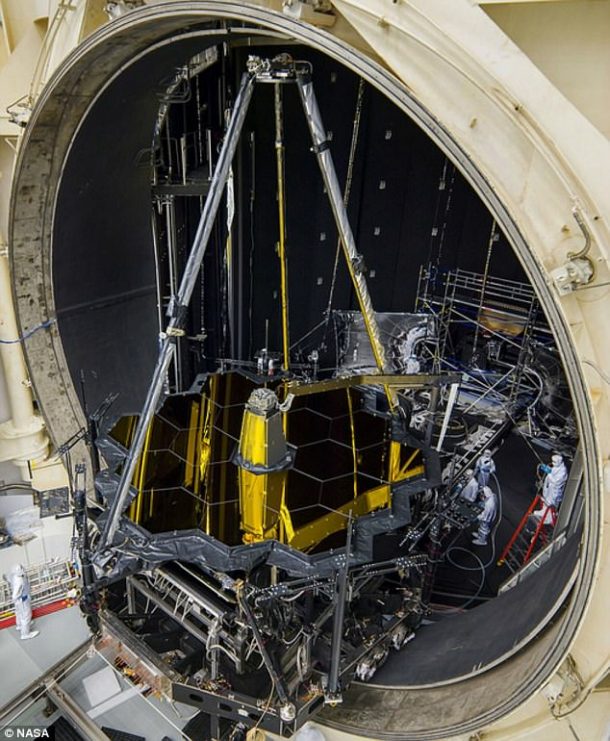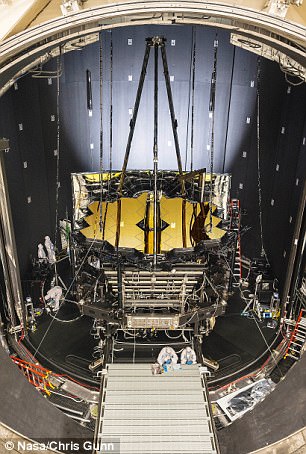The James Webb Telescope By Nasa is going to be the world’s biggest telescope and just completed a series of test that bring it much closer to a successful launch in 2019.The satellite costs $8.8 billion and was tested in a giant vacuum chamber at the Johnson Space Centre to replicate deep space conditions.
During the 100 days of cryogenic testing, the temperatures were hundreds of degrees below the freezing point. “The successful completion of this test represents a very significant milestone for JWST”, said Bill Ochs, the telescope project manager. “It verified the alignment of the telescope to the science instruments, the image quality of the telescope as well as confirming the thermal performance of the telescope. We now have verified that NASA and its partners have an outstanding telescope and a spectacular set of science instruments.”

According to NASA, the satellite must be kept very cold if it hopes to detect infrared light from faraway objects. The James Webb Telescope and most of the instruments have an operating temperature of 40 Kelvin, which 233 degrees below the freezing point. However, the mid-infrared instrument (MIRI) is kept even colder and a cryocooler keeps it below 7 Kelvin, that is 266 degrees below the freezing point.
The telescope also has 18 gold primary mirrors which were also tested last year to ensure that they act as a single mirror. The team monitored the telescope using thermal sensors and specialized cameras to track the temperatures and physical position of each component at all times.

“After 15 years of planning, chamber refurbishment, hundreds of hours of risk-reduction testing, the dedication of more than 100 individuals through more than 90 days of testing, and surviving Hurricane Harvey, the OTIS cryogenic test has been an outstanding success,” said Dr. Ochs.
The chamber began cooling on July 20 after the air was removed. This process took 30 days and then the James Webb Telescope was kept in a cryo-stable state for another 30 days. The chamber was warmed once again at the end of September and air was pumped back in. The door was unsealed on the 18th of November.

“With an integrated team from all corners of the country, we were able to create deep space in our chamber and confirm that Webb can perform flawlessly as it observes the coldest corners of the universe,” said Jonathan Homan, project manager for Webb’s cryogenic testing at Johnson. “I expect [Webb] to be successful, as it journeys to Lagrange point 2 [after launch] and explores the origins of solar systems, galaxies, and has the chance to change our understanding of our universe.”
This will increase our knowledge about the Solar System many-folds once it is launched. You can learn about the telescope here:


